INDIA(LOGUE)
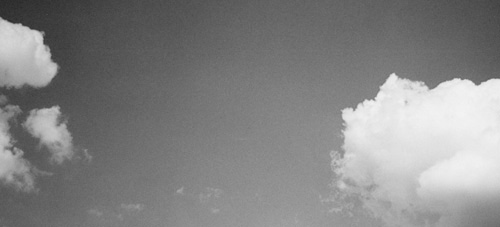
"The Self is the Auspicious Moment,
devoid of the auspicious and conspicuous time [...]
The Truth which is homogeneous is of the form of the sky."
- Avadhuta Gita, VII:11
"Goodness is the miracle which turns the tumult
of chaos into a dance of beauty [...]"
- Rabindranath Tagore
January 8, 2002 - INBOUND ITINERARY - New York to London, London to Bombay, Bombay to Bangalore. Air India from JFK, arriving at Heathrow in the early morning. Net loss, five hours. Air India from Heathrow, flying with the moon, to Munich, then southwest to Turkey, Iran, Dubai and across the Arabian Sea to Bombay. Bombay to Bangalore, Air India, arriving at 4 a.m. under cover of darkness. Net loss, Western "civilization".
January 9, 2002 - Bangalore to Tirupati, by car, arriving at 1 p.m. by way of Chinnai Road - ANDRA PRADESH - Granite outcrops appear to signal a former range of spectacular mountains now long gone except for the occasional boulder fields and magnificent pinnacled 'tumuli'. Known as "peninsular gneiss", these formations are estimated to be 3,000 million years old.
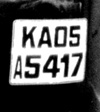 The CHINNAI ROAD is a thoroughfare for buses, lorries (Ashok Leyland), rental cars, Toyota-like land cruisers, and classic HM sedans (taxis). The road is littered with villages and truck stops ("inspection stations") with brick yards and industrial facilities sprinkled its length. Motorbikes, bicycles, oxen-drawn carts, pedestrians, and dogs crowd its narrow two-lane course. A constant bleep-bleep of horns sounds the passage of vehicles as they signal their approach and maneuvers. The villages are primarily agricultural enclaves, with towns appearing less frequently and notably cluttered with make-shift commercial strips. Women walk along the Chinnai Road carrying water, vegetables, firewood, sugarcane, and laundry on their heads. Goats, cattle, dogs, occasional fowl graze, loll, wander, or are driven along its shoulders. The oxen-drawn carts haul sugarcane, granite slabs, building materials, and people. Some carts are led by a single beast - horns painted orange and yellow.
The CHINNAI ROAD is a thoroughfare for buses, lorries (Ashok Leyland), rental cars, Toyota-like land cruisers, and classic HM sedans (taxis). The road is littered with villages and truck stops ("inspection stations") with brick yards and industrial facilities sprinkled its length. Motorbikes, bicycles, oxen-drawn carts, pedestrians, and dogs crowd its narrow two-lane course. A constant bleep-bleep of horns sounds the passage of vehicles as they signal their approach and maneuvers. The villages are primarily agricultural enclaves, with towns appearing less frequently and notably cluttered with make-shift commercial strips. Women walk along the Chinnai Road carrying water, vegetables, firewood, sugarcane, and laundry on their heads. Goats, cattle, dogs, occasional fowl graze, loll, wander, or are driven along its shoulders. The oxen-drawn carts haul sugarcane, granite slabs, building materials, and people. Some carts are led by a single beast - horns painted orange and yellow.LEAVING BANGALORE, at 5 a.m., the road was already busy with commuting buses, lorries, carts, bicyclists and pedestrians. In the hoary gauze of onrushing headlights, swirling dust, and weaving between all manner of commuter transport, we sped toward Tirupati - the sun's rays piercing high clouds and low fog.
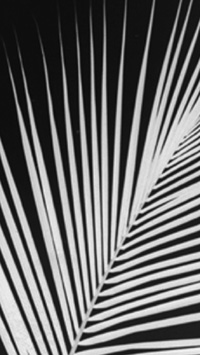 The AGRICULTURAL LANDS traversed support vegetable, rice, sugar cane and coconut palm crops. The early morning rush hour includes hand-drawn (or pushed) carts empty or laden with vegetables. The villages that fall along the Chinnai Road are a mix of plastered brick and thatched structures. Those nearest the dusty asphalt road (under construction for its entire length) include woven coconut frond and "wattle" fences to block the swirls of dust and exhaust. In the towns the exhaust fumes build to an acrid, toxic atmosphere that burns the eyes and nostrils. The diesel buses, trucks, motorbikes, auto-rickshaws and cars, combined with the other manual or hoofed forms of transportation, meld into an incredible, frenzied carnival best described as choreographed chaos.
The AGRICULTURAL LANDS traversed support vegetable, rice, sugar cane and coconut palm crops. The early morning rush hour includes hand-drawn (or pushed) carts empty or laden with vegetables. The villages that fall along the Chinnai Road are a mix of plastered brick and thatched structures. Those nearest the dusty asphalt road (under construction for its entire length) include woven coconut frond and "wattle" fences to block the swirls of dust and exhaust. In the towns the exhaust fumes build to an acrid, toxic atmosphere that burns the eyes and nostrils. The diesel buses, trucks, motorbikes, auto-rickshaws and cars, combined with the other manual or hoofed forms of transportation, meld into an incredible, frenzied carnival best described as choreographed chaos.Tirupati, Chittor, Andra Pradesh - APPROACHING TIRUPATI an old palace/fort, or what is left of it, borders the road. The perimeter of the compound, low turrets rising every few meters, is all that remains of the massive fortified structure. Central Tirupati is now a small city of 4-5 storey buildings with the air of a market town (bazaar). It sits in a flat valley surrounded by mountains. This chaos is the rule in small Indian cities where no binding rules for traffic other than staying nominally to the left exist. Entering the outskirts of Tirupati we pass the college district. A deformed man, his legs wrapped around his upper body, drags himself through the street looking for alms. He is totally ignored.
January 10, 2002 - Bhimas Residency Hotel, TIRUPATI - Central Tirupati, "place of power", is nonstop bazaar. The streets are clogged with motorized rickshaws (4-stroke), motorcycles and bicycles, plus cars. Every square inch is retail. Constant honking, dodging, weaving accompanies nonstop commerce. (The rickshaws actually quack versus honk.) The one area free of this frenzy is the lane to the temple near the center of the city. Here it is pedestrian only (plus performing elephants). The elephants stand back ends to an inner temple gate swinging their trunks. A few rupees buys their blessing as they tap your shoulders with the tip of their trunk. Pass them a banana and it goes straight into their mouths. Pass them a coin and it goes straight into the pocket of the elephant's master. In the traffic circus the motorbikes are the most plentiful and they are dual occupancy - driven primarily by young men (occasionally a young woman) or a father with daughter or son at the rear. The fashion for the men is to drive around with their girlfriends or wives - the ladies ride side saddle in sari often with a flower in their hair. The motorbikes have a rat-a-tat-tat sound and belch toxic blue smoke.
January 11, 2002 - SRI KALAHASTI - Site of 8th-century Saiva temple - Three gopuram (gates) in a small town between two hills - One hill with zigzag steps to the top and a Durga temple/shrine - Both hills have modern additions: radio transmission towers and/or advertising (billboards) - The town is a market surrounding the temple - less harried than Tirupati - The temple is the main event versus a relic - Puja: a ritual sacrifice to Saiva, to assist with the passage through Rahu ... Attended by two Brahmins (priests), bathed in chants, incense, fire, led through the interior maze of the temple to the lingam (the only portion of the temple not electrified), passing en route various deities and shrines and shedding karma and rupees ... - The Brahmin priest that conducted the puja (through an underling) has very modern sensibilities. He is wry and modestly worldly. He has a business card, a cell phone and an e-mail address. After the ceremonial tour of the temple, he takes us to town to the hotel where he holds court - A murder of sadhus enters the lower level for lunch. We are taken to visit them, part of the ritual, and they perform a chant en masse. Feeding the sadhus means paying for their meal at the hotel.
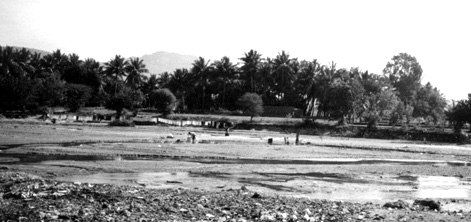
Sri Kalahasti to PUTTAPARTI via Route 205- Over rural, rough roads - battling oncoming traffic on narrow bands of eroding tarmac - and ranging from 5 kilometers per hour to 90 kilometers per hour (the latter where unbroken stretches of road appear miraculously out of a permanent, ongoing construction program). We fly over pot-holed sections of roadway when the surface is not totally broken up, but crawl through washouts and town centers. Tea every two hours or so - total trip over seven hours - ending in the Chitravati River at Puttaparti around 8 p.m., attempting a crossing in 6 to 8 inches of water and alluvial sand. One hour and six to seven volunteers to free the car, a front-wheel drive Fiat.
January 12, 2002 - Puttaparti, Anantapur, Andra Pradesh - Arising at 4 a.m. and entering the ashram PRASANTHI NILAYAM at 5 a.m. to queue up for darshan, the sun rises as the covered hall receives thousands. The hall is an ornate affair - Hindu rococo - with palm columns, marble floor, and coffered ceiling hung with chandeliers. The darshan starts with a raga, and Bhagavan Sri Sathya Sai Baba enters, from the left, west, amid the women's area and 'with the sun' (so-to-speak). He moves slowly through the seated devotees to the front where the mandir acts as a stage/set or verandah. His students (all in white) are gathered in the 'eves' of the mandir and dignitaries and functionaries hover nearby calculating where to install themselves. The mandir is made or finished in soft pastel hues - a ceramic facade that is Hindi inspired but hardly traditional. This is perhaps a type of postmodern Indian architecture, or post-classical new age.
The ashram is a village within the village of Puttaparti. It seems it was given to the Sai Trust by a benefactor - or that's the tale. Others say the land was purchased outright. There are rows of apartment blocks and various facilities including cafeterias and stores. The entire setting is 'garden like' but also very structured with roads running through. Nestled at the base of a complex of hills, the higher ground is given over to administrative buildings and a museum. It is more or less off limits to the hoi polloi. These higher functions are part of the apparatus or bureaucratic machinery that runs this theocratic utopia. Access to the ashram is 'discretionary' - this means they can deny you access or throw you out. Most are waved through, excepting the beggars. The great unwashed enter through the Ganesha Gate. Lines are formed by the Sevas (the volunteer army that runs the ashram), every one seated in neat rows outside the mandir and eventually each line files toward the entrance to the darshan hall. Women and men are segregated and are processed and seated separately. There are two routes into the hall on the men's side, one for students and dignitaries, one for everyone else. A rote frisking and scanning by metal detector is administered to everyone. Bags, shoes, cigarettes and cameras are strictly forbidden in the hall. Just before darshan, after the unwashed have queued and sat for hours, the dignitaries arrive by car and jeep through the Ganesha Gate and are ushered into the hall. The students come at the last minute as well and run into the hall in bare feet and plop themselves at the head of the assembled thousands. After the Sevas pack the hall, each person has about one square meter of marble floor to themselves. When Sai Baba enters necks crane, hands go up in prayerful mode, some of the Indians sit on their legs or clandestinely kneel to get a view. The Sevas trot back and forth scolding and cajoling the miscreants to sit. Standard rhetorical fare at the ashram by almost everyone is to begin and conclude every utterance with "Sai Ram". "Sai Ram, sit down." "Sai Ram", then you are frisked. "Sai Ram, you can't sit there." "Sai Ram, you must throw your cigarettes in the box and check your bag." "Sai Ram, no umbrellas may be checked. Sai Ram." I take my umbrella, put my cigarettes inside it with the lighter, lean it up against the wall where thousands of pairs of shoes are left during darshan and retrieve it after the whole sordid affair is over. I refuse to utter the words ... They remind me too much of "Heil Hitler" (even if here the svastikas are whirling in the 'proper' direction)
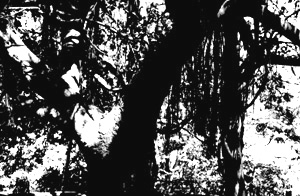 Like all utopias, Sai Ram, this one relies on the vigilance of hundreds and hundreds of sets of eyes and ears, Sai Ram - a benevolent, mini-police state, Sai Ram. As an elective community this is part and parcel of the orderly, very tidy village within the village. Compared to the divine chaos of India, just outside the gates, the Sri Sai Baba ashram is an oasis of serenity - strictly enforced serenity, Sai Ram. This police state is a paradigm - an example of the same police state each and every devotee is meant to internalize.
Like all utopias, Sai Ram, this one relies on the vigilance of hundreds and hundreds of sets of eyes and ears, Sai Ram - a benevolent, mini-police state, Sai Ram. As an elective community this is part and parcel of the orderly, very tidy village within the village. Compared to the divine chaos of India, just outside the gates, the Sri Sai Baba ashram is an oasis of serenity - strictly enforced serenity, Sai Ram. This police state is a paradigm - an example of the same police state each and every devotee is meant to internalize.The mandir, which includes Sai Baba's residence, was once fronted by palms and sand - before the rococo hall was built - and before the curia was established. The curia is the army of white dressed (men) and sari-clad (women), plus the Sai police, petty clerks, shopkeepers, bakers, gardeners, teachers, and presumably handlers. The high curia inhabits the high offices of the Sathya Sai Trust. It is said that his brothers and sisters also are part of this upper echelon - and doing very nicely, Sai Ram.
January 13, 2002 - Puttaparti, 'Guest House', Chitravati Road - The BATTLE OF WITS - How cheaply can one live in India? How many rupees per day? What passes for a 'room' in a 'hotel' or 'guest house'. We have elected not to stay on the ashram.
Chai tea w/ milk - 2-10 rupees depending on size and vendor
Room w/ so-called hot water - 150 rupees for two persons, per day
Kitchen - narrow closet-like space w/ tiled counter, clothesline running overhead, no appliances, no light, a sink with the water draining onto the floor and under a rock
Bathroom - room with tiled floor and wall, almost a whole toilet toilet, shower that doesn't work and sink
Running water - always running water
Balcony - narrow space w/ old mattress leaning against balustrade
Food - uttapam, iddly, masala dosa, masala tea, 'coffee'
Bottled water - small, 7 rupees - large (1 liter), 12 rupees
Internet access - 1 rupee per minute (five minutes to load a page)
Cigarettes - 4 rupees each (from street vendor) - 53 rupees for a pack of 20
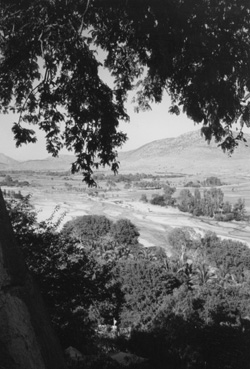 The WISHING TREE, Chitravati Road, Puttaparti - Climb concrete steps, gift of engineering company to the Sai Circus, lined with vendors and beggars, to the tree on the edge of a rock outcrop high above the village and growing out of a small chasm (manmade?). Ring bell, light incense, write note, make prayer and offering. From top of hill, a view of Puttaparti and the ashram and colleges. River and outlying villages and hamlets disappear over the horizon, beyond the hills. Cars crossing the Chitravati River, dogs, people, laundry, all in the river bed, which is a bed of sand with rivulets coursing through. Descend, pass same, exit to street. Look back at hilltop - to police station (unmanned bunker) and radio tower. Scratch head.
The WISHING TREE, Chitravati Road, Puttaparti - Climb concrete steps, gift of engineering company to the Sai Circus, lined with vendors and beggars, to the tree on the edge of a rock outcrop high above the village and growing out of a small chasm (manmade?). Ring bell, light incense, write note, make prayer and offering. From top of hill, a view of Puttaparti and the ashram and colleges. River and outlying villages and hamlets disappear over the horizon, beyond the hills. Cars crossing the Chitravati River, dogs, people, laundry, all in the river bed, which is a bed of sand with rivulets coursing through. Descend, pass same, exit to street. Look back at hilltop - to police station (unmanned bunker) and radio tower. Scratch head.The tree is reputedly (as everything is mixed up with the fabulous) the very one where young Sathya Sai Baba - already a saint - fed himself by 'materializing' fruit. The notes of penitents are stuck into the cracked face of the rock outcrop and into the fissures in the bark of the fairly old tree. The chasm has a small ghee lamp and a photograph of Sai Baba. There is moist earth within - perhaps sign of a spring. At base of steps 4 or 5 goats arrive laden with firewood and guided, by word, by the goatherd. The verges of the stair and the top of the hill are strewn with litter. The vendors seem to have a different opinion of the place.
The PUBLIC RELATIONS OFFICE - I ask, "Is there one architect for the ashram?" Answer: "Go to Room 11." I go to Room 11. No one is there.
January 14, 2002 - Puttaparti - Morning DARSHAN = spectacle. Pangali New Year = speeches. Brass band, decorative banners. "Stronger, Higher, Faster". Hall overflowing with special guests. Trophies line a table on the verandah. I leave early.
Sai Baba is wrapped in layers of bureaucracy and today it shows. It's Spectacle Day - fanfare for the competitive soul: STRONGER-HIGHER-FASTER. The curia and the faux-ornate trappings of the darshan hall are over-the-top today. One wishes to think the festivities and the ornaments and baubles are secretly meant as a joke. If anything, they are a product of the curia foisting/forcing yet another event, supplicants and retainers attempting to please Swami. It is embarrassing and clearly meant to impress the sea of devotees. One might guess that this succeeds mostly with poor Indians, but the starry-eyed Westerners are not immune. Eyewash may impress those accustomed to a bleak everyday reality, but it also impresses those who have suspended all judgment.
Return to darshan hall upon hearing Sai Baba's voice over the PA system ... but stand outside looking in. He launches into a discourse (as his speeches are officially called) on "mind and matter". Mind-Intellect-Wisdom, or a Vedanta lecture on Atma (the Self). "Language cannot reach mind." The body and the rose ... The rose can only approach the mind through the body ... What is left, and what is right? Left is 'left' and right is 'right'. Platitudes flow ... This is aimed at the students of the Sai schools. He is lecturing them on arrogance and what true knowledge is. Exhorting them to practice mindfulness while telling them that the mind must be eliminated. In other words, nothing remarkable, everything remarkable. Pure Vedantic rubbish and pure treasure.
Bhagavan's discourse was delivered in Telegu with a running English translation by a pompous elder academic or high curia member - who knows. Swami's delivery was increasingly energetic. The translator could not keep up and Swami actually launched into the next section without waiting for the translation to end. They spoke over one another. Swami stopped the pompous orator once to correct his translation in English. It was a spirited assault that went on for perhaps 45 minutes. Such events are rare in a day-to-day sense but there are reams of devotional literature, or transcribed 'discourses' available in the Sai bookshops and stalls. He's been at it for over 60 years. "Matter does not matter", but in nicely inflected Telugu. The force of the words proved the point. Telegu phonemes, to the ear of this Westerner, are sheer delight. "Who are you?", in English no less. "Atma", a Sanskrit term for the Self. Oh, and "There will be no war with Pakistan." "Nothing will happen." This last bit dramatized by the translator, in bombastic English, sounded like the voice of God announcing Peace on Earth. Amen.
 The BEGGARS - Young women with babes in arms. "Small milk, no rupees ..." "Maah, maah ..." - Old men and women w/ canes - A few children - An occasional crippled man (lying in the road or dragging himself through the street) or a maimed woman (fingers and/or hands missing or grossly disfigured) - The local line is that most of them are professional beggars brought to town for the Sri Sai Circus - Some say (usually Westerners): The women rent the babies and pay a fee to a handler; If you buy them milk they sell it; The maimed women are intentional maimed, for pity's sake, and to make a more profound impression on Westerners; Some of the beggars are middle-class citizens from Bangalore supplementing their income by feeding off the circus; on and on goes the rationale for ignoring them. There are occasional authentic mendicants. Sometimes a ragged man w/ a ragged ox and a horn going door to door. Alms in exchange for a blessing. They are picturesque versus pathetic to the Western eye.
The BEGGARS - Young women with babes in arms. "Small milk, no rupees ..." "Maah, maah ..." - Old men and women w/ canes - A few children - An occasional crippled man (lying in the road or dragging himself through the street) or a maimed woman (fingers and/or hands missing or grossly disfigured) - The local line is that most of them are professional beggars brought to town for the Sri Sai Circus - Some say (usually Westerners): The women rent the babies and pay a fee to a handler; If you buy them milk they sell it; The maimed women are intentional maimed, for pity's sake, and to make a more profound impression on Westerners; Some of the beggars are middle-class citizens from Bangalore supplementing their income by feeding off the circus; on and on goes the rationale for ignoring them. There are occasional authentic mendicants. Sometimes a ragged man w/ a ragged ox and a horn going door to door. Alms in exchange for a blessing. They are picturesque versus pathetic to the Western eye.The VENDORS - The sales pitches vary very little. "Hey, excuse me... " "Come look at my shop, no problem, no pressure ..." "Hello! Come inside" "Postcards? Look?" They follow you down the street. It's the hard sell if they get your attention. All prices are invented on the spot. No looking allowed with out the customary harangue.
HOLY AIRS (for Westerners) - Slight to entirely glazed look, expressionless mouth (down turned), slow gait, long or loose-fitting Punjabi or sari, practiced disdain for your fellow kind. Competitions: Holiest look, longest Sai pedigree, closest close encounter(s) with the miraculous (includes dreams), longest expression possible, most authentic Sai ring (materialized), badge, watch or other trifle, most haughty attitude problem, most high info payload w/ platitudes.
Walk to CHITRAVATI RIVER (whence we came unstuck), past squatters, past three-legged donkeys (two front legs tied together), past garbage heap at edge of town (where more three-legged donkeys forage amid the plastic and coconut shells), past Muslim cemetery overrun with more garbage, past pumping station at river's edge, past Untouchables.
Purchased AVADHUTA GITA of Dattatreya, or "Song of the Free"*, a Vedanta hymn to non dualism and extreme advaita (liberation). "Though Avadhuta naturally implies renunciation, it includes an additional and yet higher state which is neither attachment nor detachment but beyond both. An Avadhuta feels no need of observing any rules, either secular or religious. He seeks nothing, avoids nothing. He has neither knowledge nor ignorance. Having realized that he is the Infinite Self, he lives in that vivid realization." (Foreword) - *translation Swami Ashokananda (Madras: Sri Ramakrishna Math, n.d.)
[end part one]